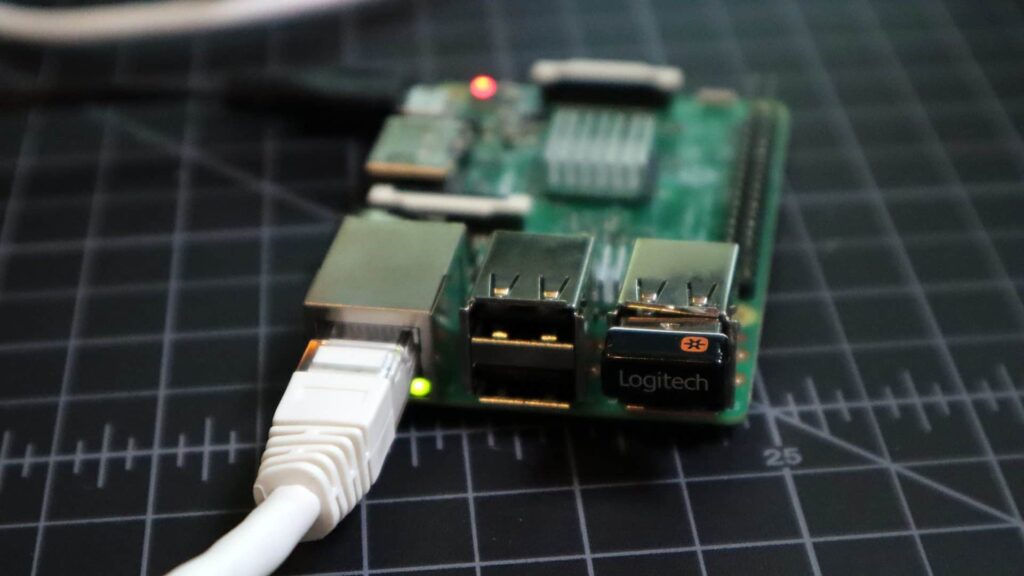Raspberry Pi VPN: In today’s digital age, security, and privacy are more important than ever. Whether you’re browsing the internet, accessing public networks, or even working remotely, a Virtual Private Network (VPN) can offer a layer of protection for your data. If you’re looking for a cost-effective and flexible way to implement a VPN, setting it up on a Raspberry Pi can be a great solution.
In this article, we’ll dive deep into how to set up a VPN on your Raspberry Pi, exploring the benefits, the process, and everything you need to know to get your Raspberry Pi working as your own personal VPN server.
Why Use a VPN on a Raspberry Pi?

Before we jump into the setup process, let’s quickly review why you might want to use a Raspberry Pi as a VPN server.
1. Cost-Effective
The Raspberry Pi is an affordable mini-computer that offers a lot of functionality for a very low price. By setting up a VPN on it, you get a private server to protect your data without spending on expensive hardware or subscription fees, which is often the case with commercial VPN services.
2. Increased Privacy and Security
With a VPN, your internet traffic is encrypted, making it more difficult for hackers, ISPs, or anyone else to intercept your data. Using a Raspberry Pi to host your own VPN means you maintain control over your privacy and security, reducing reliance on third-party VPN providers.
3. Remote Access to Your Home Network
Having a VPN on your Raspberry Pi allows you to access your home network from anywhere. For example, if you want to access files on your home computer or securely browse the internet while traveling, a VPN gives you a secure connection to your home network, even over public Wi-Fi.
4. Flexibility and Control
Unlike subscription-based VPN services, running your own VPN server on a Raspberry Pi gives you complete control over the settings, configurations, and features. You can customize your server to meet your specific needs, such as controlling which devices are allowed to connect.
What You Need to Set Up a Raspberry Pi VPN
Before we begin the setup process, make sure you have the following:
- A Raspberry Pi (3, 4, or later model)
Ensure that your Raspberry Pi is up and running with Raspberry Pi OS installed. - A microSD Card
You’ll need a microSD card with at least 8GB of storage to install the operating system and VPN software. - A Power Supply for the Raspberry Pi
A suitable power adapter is needed for your Raspberry Pi model. - A Network Connection
You need to connect your Raspberry Pi to your network using either Wi-Fi or Ethernet. - A VPN Server Software
There are several options available for setting up a VPN on a Raspberry Pi. One of the most popular and widely used tools is OpenVPN, a robust, open-source solution that’s both powerful and well-supported. - A Public IP Address
If you plan to access your VPN remotely, having a static public IP address or a Dynamic DNS (DDNS) service can help.
Now, let’s move on to the actual setup!
Step-by-Step Guide to Set Up OpenVPN on Raspberry Pi
Step 1: Update Your Raspberry Pi
Before we start with any installation, it’s essential to update your Raspberry Pi’s operating system to ensure you have the latest security patches and software versions. Open a terminal on your Raspberry Pi and type the following commands:
- bash
- CopyEdit
- sudo apt update
- sudo apt upgrade
This will update the package lists and install any available updates.
Step 2: Install OpenVPN on Raspberry Pi
Once your Raspberry Pi is up-to-date, we can install OpenVPN. OpenVPN is an open-source software that allows you to create a secure connection to another network over the internet. To install it, type the following command in the terminal:
- bash
- CopyEdit
- sudo apt install openvpn
Step 3: Set Up the OpenVPN Configuration Files
Now that OpenVPN is installed, you need to configure it. There are two main ways to do this: you can either create your own configuration files or use a script that automates the process for you.
If you’re comfortable configuring the files manually, you can start by creating a directory for OpenVPN configuration files:
- bash
- CopyEdit
- sudo mkdir /etc/openvpn/easy-rsa
Next, you’ll want to download and configure the Easy-RSA tool to help with generating your own keys and certificates. However, for ease, you can use a pre-configured script that will automatically set up OpenVPN for you.
Step 4: Use a Script for Automatic Setup (Recommended)
For many users, the easiest way to set up OpenVPN is by using a pre-configured script. One of the most popular scripts is the PiVPN script, which simplifies the process.
To install PiVPN, run the following command:
- bash
- CopyEdit
- curl -L https://install.pivpn.io | bash
The PiVPN script will guide you through a simple process where you’ll be prompted to choose your VPN provider (OpenVPN or WireGuard), select a static IP address, and configure additional settings. PiVPN will automatically install and configure the necessary files.
Step 5: Generate Your VPN Client Configuration Files
Once the server is set up, you’ll need to generate a configuration file for each device you want to connect to your VPN. PiVPN makes this easy by providing a simple command to create configuration files for your client devices.
To generate a client configuration, use the following command:
- bash
- CopyEdit
- pivpn add
You’ll be prompted to give the client a name (for example, your phone or laptop), and PiVPN will generate a .ovpn file, which you can use with the OpenVPN client on your devices.
Step 6: Transfer the Configuration File to Your Device
Once the configuration file is created, transfer it to the device you want to connect to the VPN. You can use secure methods such as SCP (secure copy protocol) or just email it to yourself if you prefer a simpler option.
Step 7: Connect to Your VPN
Now that everything is set up, you can connect to your Raspberry Pi VPN server. Open the OpenVPN client on your device and import the .ovpn file. After that, you can connect, and your internet traffic will be routed through your Raspberry Pi VPN server, ensuring privacy and security.
Troubleshooting and Tips
1. Dynamic DNS (DDNS) Setup for Remote Access
If you don’t have a static IP address from your ISP, you can use a Dynamic DNS service. DDNS provides you with a domain name that automatically updates whenever your public IP address changes. Services like DuckDNS or No-IP are free and easy to set up.
2. Firewall Settings
Make sure your firewall settings allow VPN connections. Typically, OpenVPN uses port 1194, so ensure that this port is open on your router and firewall.
3. Testing and Verification
To ensure that everything is working correctly, you can test your VPN connection by trying to access a website that shows your public IP address. It should display your home network’s IP address when you’re connected to the VPN.
Conclusion
Setting up a VPN on a Raspberry Pi is a rewarding and empowering project that enhances your privacy and security online. Not only do you have full control over your VPN server, but you also save money and enjoy the satisfaction of having a DIY security solution. Whether you’re using it to secure your internet browsing or to access your home network remotely, a Raspberry Pi VPN setup is a perfect choice for tech enthusiasts and privacy-conscious individuals alike.
By following this guide, you should now have a fully functional VPN server running on your Raspberry Pi, with the ability to securely connect to it from any device. So why not give it a try and take control of your online privacy today?
Happy VPN-ing!


